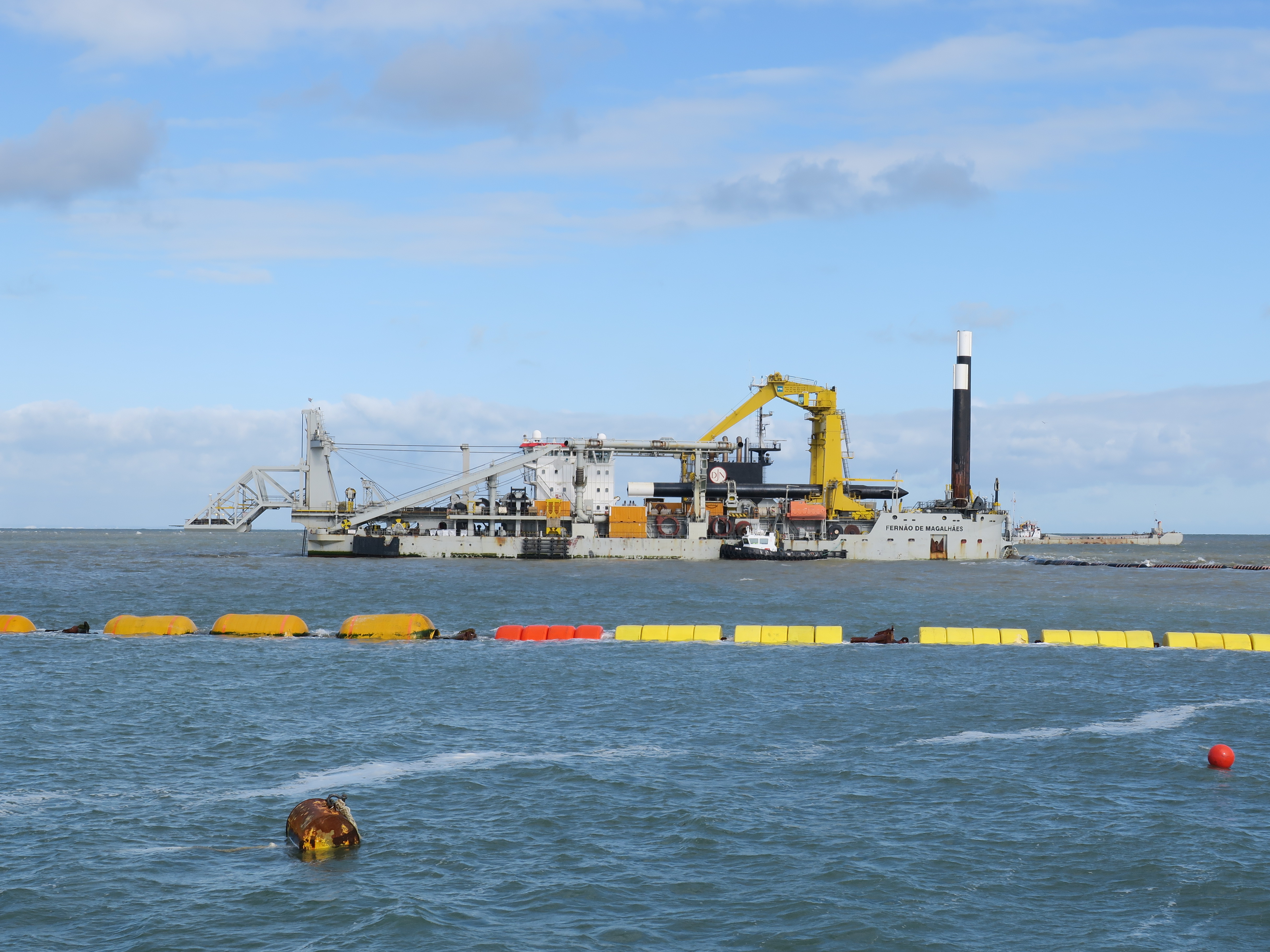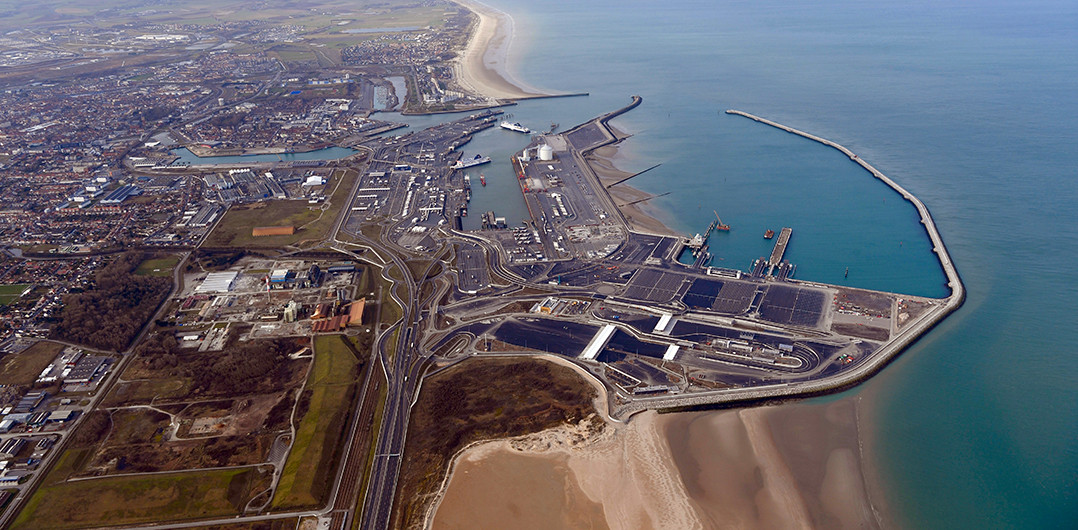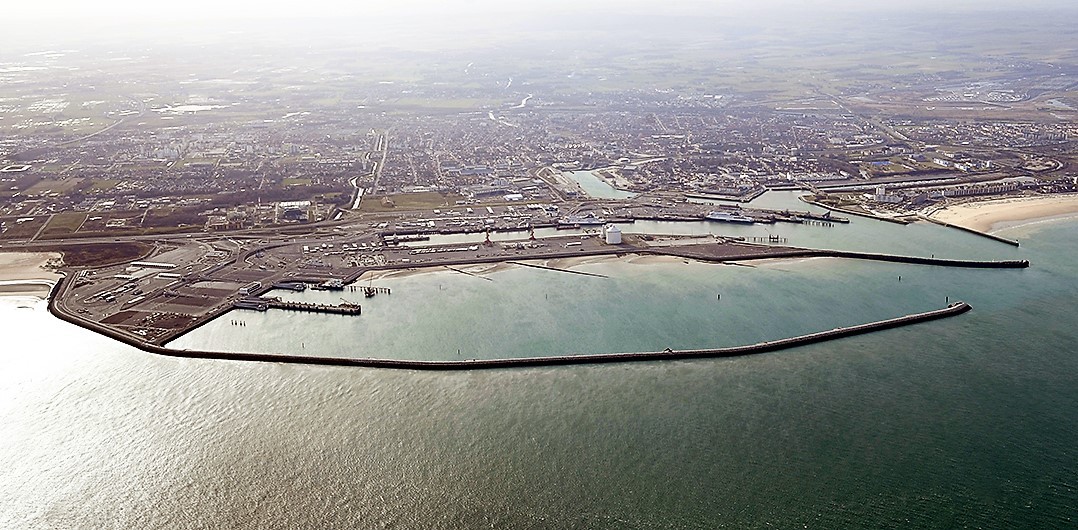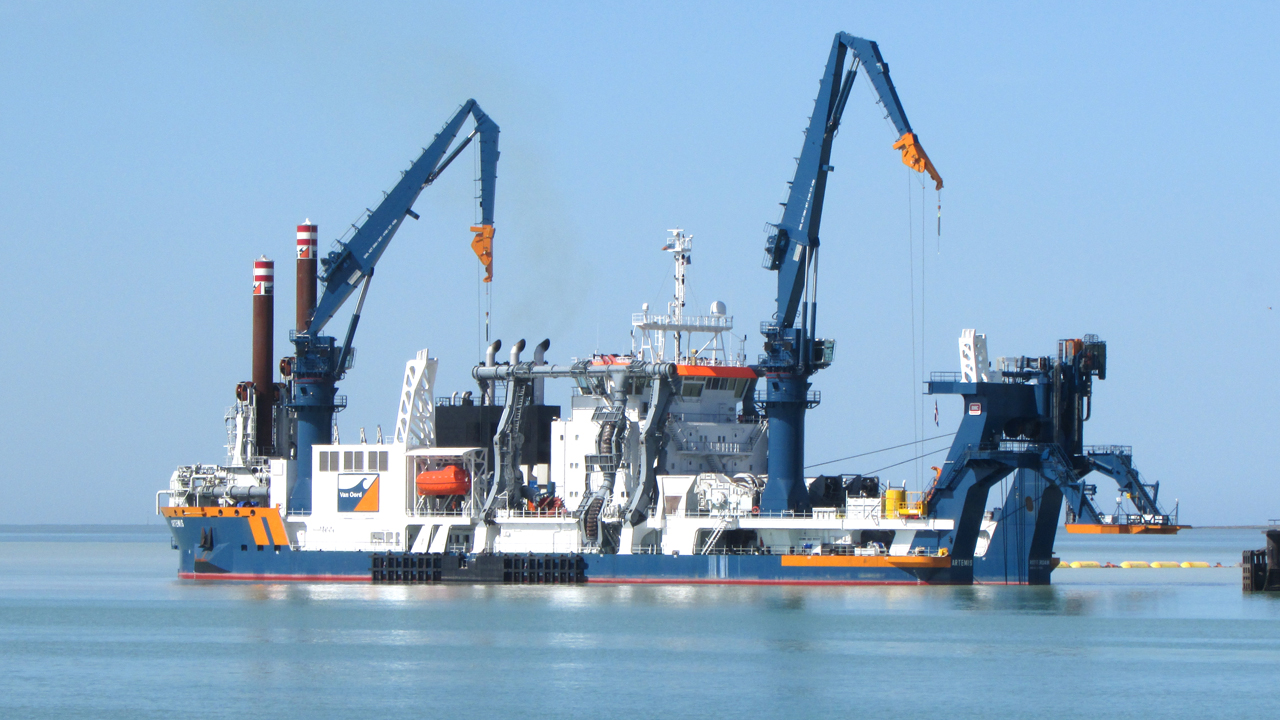Future proof: the Calais Port 2015 project

In 2015, one of the major port improvements in Europe was done to the Calais Port in northern France, which intended to make the port future-proof. Only 41 kilometres across the water from the port of dover in England, Calais is the closes port on the continent to the UK, making it a vital location for cross channel traffic. Itr is the fourth largest port in France and is the largest in terms of passenger traffic. The traffic in the port of Calais has continued to grow, despite the opening of the Channel Tunnel in 1994.
The port has seen traffic both passenger and cargo triple over the past two decades and in 2007 alone was used by 12 million passengers good for more than 41.5 million tonnes of traffic. Seeing the expected growth of another 40% and a possible saturation by 2020, major improvements were unavoidable.
Vital to this project were the vessels and equipment to get the job done. Carrying out the lion's share of dredging and reclamation work was the cutter suction dredger (CSD) FERNÃO DE MAGALHÃES. The unit comprises of four heavy-duty self-propelled CSD's built in 2010 and 2011. Each dredger is equipped with three powerful high efficiency cutter special (HE-CS) dredge pumps which we have specially developed for our CSD's.
Additional port capacity
The Calais Port 2015 project involved the creation of 65 hectares of new operational land, of which 45 hectares was reclaimed from the sea. On top of significantly increasing the capacity of the port, the project also enabled the handling of future-generate ferry ships, with a length of up to 240 metres. Older ferries were on average 213 metres in length.
A new ferry terminal was built on the outside of the current sea defence, which comprises three new ferry slips. The land and the slips are protected by a newly made three kilometre breakwater. This also cred an additional navigable port basin of 90 hectares.
Dredging and rock works
Jan De Nul/Sodraco commenced dredging activities in July 2016 with the 8,330kW medium-sized cutter suction dredger (CSD) HONDIUS. The vessel had to dredge a trench through a sand bar in order to be able to carry out the rock works for the new breakwater at this location. This operation, representing some 0.8 million m3 of sand to be dredged was carried out in July and August 2016. The sand was pumped into the reclamation of the new port area.
Once the trench was completed, Jan De Nul/Sodraco could begin the first stage of the rock works, which ran from September 2016 to January 2017. The equipment involved included the split hopper barges GEELVINCK and NIJPTANGH (both 1,800m3), as well as the L’ETOILE, LE GUERRIER, LE SPHINX and TIGER (all 3,700m3). In addition, the side stone dumping vessel POMPEI was deployed and the backhoe dredger GIAN LORENZO BERNINI was used for the profiling work of the stone. During the first stage of the rock works, approximately 700,000 tonnes of material originating from quarries in Norway and Spain was handled.
In March 2017, Jan De Nul/Sodraco introduced its 23,520kW CSD FERNÃO DE MAGALHÃES to carry out the lion’s share of the dredging and reclamation work. The FERNÃO DE MAGALHÃES is a unit that comprises four heavy-duty self-propelled CSDs built in 2010 and 2011. Each dredger is equipped with three powerful High Efficiency Cutter Special (HE-CS) dredge pumps that we have specially developed for our CSDs.
The FERNÃO DE MAGALHÃES was given the task of dredging 3.7 million m3 of material from the sea floor and pumping it to the shore. With this activity, both the required depth in the new harbour basin was achieved, as well as bringing the necessary material to the reclamation area. Close to the original coastline, the presence of a relatively soft layer in the subsoil consisting of a mix of sand and silt had to be taken into account. In order to put strain on this layer and induce settlement, a significant overburden was applied, ranging from two to seven metres. The largest overburden is applied at the location where an important interchange is scheduled to be built.
Also in 2017, the second stage of the rock works was carried out. This represented an additional 900,000 tonnes of rock that needed to be handled, an operation for which Jan De Nul’s 32,000-tonne fall pipe vessel (FPV) SIMON STEVIN was used.
Completion
The completion and delivery of the entire project was finalised in May 2021 with its official inauguration on September 9, 2021. Final work included a completion of the superstructure of the breakwater and the dry infrastructure of the project. This included the rehandling of sand overburden within the reclamation area to be levelled at a height of approximately 10 metres above CM (Code Marine or Chart Datum).


Port of Calais
The owner of the port of Calais is Région Hauts-de-France, which has entrusted its management and operation to Société d'Eploitation des Ports du Détroit (SEPD), also known as Port Boulogne Calais. A dedicated company, Sociéeté des Ports du Détroit (SPD), has been commissioned by SEPD to complete the project.
In turn, SPD has awarded a contract to a joint venture known as Groupement Constructeur, which consists of two main aspects. The first involves the Jan De Nul Group and its French subsidiary Sodraco. They will oversee the underwater rock works, dredging activities and reclamation works. In the second, Sous-Groupement Génie Civil (SGGC) will carryt out the rock works above the water level and all activities on land in order to complete the infrastructure of the new port area.

Can we help you?
Want to learn more about our solutions to help fulfil your tenders? Get in touch and one of our experts will help you!